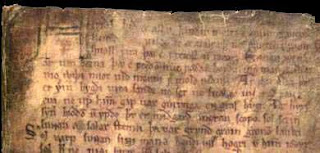Raised to the third degree of Masonic craft, our congratulations to our newly raised brother!
Bro. Benjie Camandang
3rd Degree Conferral - October 18 ,2011
SO MOTE IT BE
How familiar the phrase is. No Lodge is ever opened or closed, in due form, without using it. Yet how few know how old it is, much less what a deep meaning it has in it. Like so many old and lovely things, it is so near to us that we do not see it.
As far back as we can go in the annals of the Craft we find this old phrase. Its form betrays its age. The word MOTE is an Anglo-Saxon word, derived from an anomalous verb, MOTAN. Chaucer uses the exact phrase in the same sense in which we use it, meaning “So May It Be.” It is found in the Regius Poem, the oldest document of the Craft, just as we use it today.
Masonic Sharks Tooth
During the 19th century and the great Age of Sail, many Masonic Brethren "went down to the sea in ships." Their maritime professions ranged from ship builder, or ship's Master, to simple mariner. Wherever they traveled, Masonry traveled with them. A number of duly constituted Masonic Lodges were created in the East Indies, South and Central America, the Mediterranean and other ports around the world where seafaring Brethren could meet and enjoy fellowship. Traveling certificates, often printed in three or four languages, attested that they were Master Masons in good standing and eligible for admittance to these foreign Lodges. During long voyages, there were other opportunities to reaffirm the dual bonds that bound them to the sea and Masonry. Without official sanction, Freemasons seldom lost an opportunity to hoist Masonic flags and pennants while underway, or in port, in efforts to recognize one another. These displays often resulted in meetings where brotherhood and good fellowship could be more thoroughly enjoyed. In a number of countries, the Papal bull of 1738 continued to prevent the conduct of open Masonic meetings ashore, but probably gave rise to their safe retreat aboard sovereign ships lying at anchor in the harbor. Life at sea was hazardous in the 19th century, and necrology published in Grand Lodge Proceedings often grimly announced "death at sea" of many mariner Brethren. Despite the hazards of life on the briny deep, Freemasonry proudly rode the waves as the legacy of the above sharks tooth will testify.
THE REGIUS MANUSCRIPT (Year: 1390) One of the oldest Masonic Documents known to date.
The Regius Manuscript
"A Poem of Moral Duties"
"A Poem of Moral Duties"
The text of the Regius Manuscript states that Freemasonry was brought to England during the reign of King Athelstan from 924 to 939 but this connection was not realised until 1840 when it was translated and featured in an article on Freemasonry by James Halliwell.
Some of the Old Charges in these ancient documents that have come down to us date from the 14th century. Some of their rules, legends, and regulations are now incorporated into traditional Masonic history.
Normally these documents are in the form of handwritten paper and parchment rolls, each one comprised of hand-written sheets which have been sewn or pasted together or bound in book form.
Incorporated into the Minute Books of lodges some of these Old Manuscripts range from 1390 until 1714. While a few are in Gothic script, most are in the British Museum, United Grand Lodge of England and the Masonic Library of West Yorkshire, England.
Some of the Old Charges in these ancient documents that have come down to us date from the 14th century. Some of their rules, legends, and regulations are now incorporated into traditional Masonic history.
Normally these documents are in the form of handwritten paper and parchment rolls, each one comprised of hand-written sheets which have been sewn or pasted together or bound in book form.
Incorporated into the Minute Books of lodges some of these Old Manuscripts range from 1390 until 1714. While a few are in Gothic script, most are in the British Museum, United Grand Lodge of England and the Masonic Library of West Yorkshire, England.
Subscribe to:
Comments (Atom)










